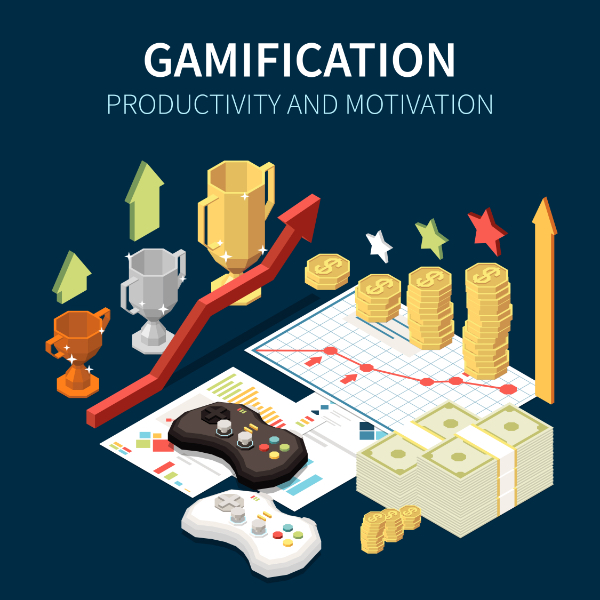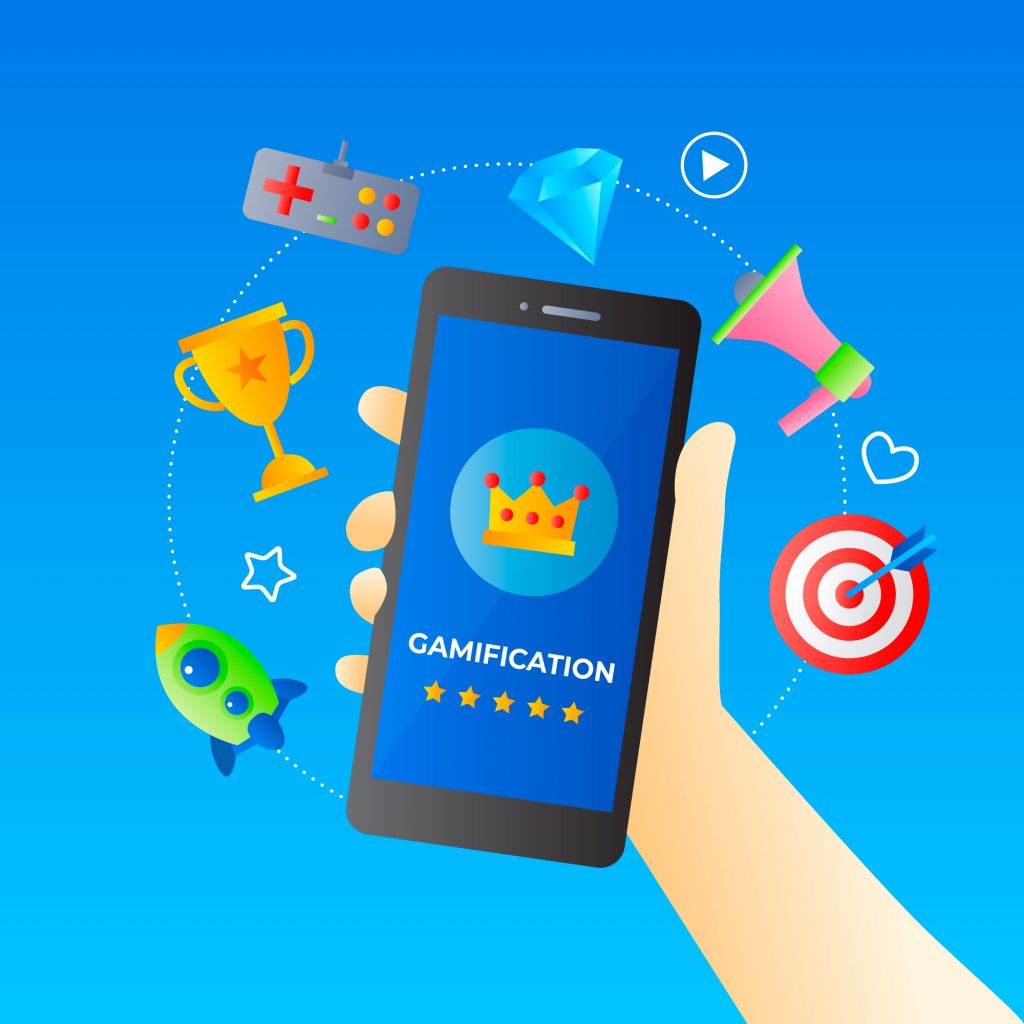- By incorporating game elements like rewards, challenges, and progress tracking, financial apps turn budgeting, saving, and investing into fun and motivating activities.
- Gamification taps into human desires for rewards, competition, and instant gratification, helping users stay motivated to reach their financial goals.
- Many gamified apps encourage users to share achievements with others, creating a sense of community and friendly competition that boosts engagement and goal achievement.
Managing personal finances can often feel like an overwhelming challenge. For many people, the process of budgeting, saving, investing, and tracking spending is time-consuming and stressful. Yet, in recent years, a new trend has emerged that is changing how people approach their finances: gamification.
By incorporating elements of gaming into financial tools and apps, gamification is making the process of managing money more engaging, motivating, and even enjoyable. But how exactly does it work, and why is it becoming so popular?
Also read: Unlocking bitcoin: A game-changing move in ETF fees
What is gamification?
Gamification refers to the integration of game-like elements into non-game environments to encourage user participation and improve engagement. These elements might include points, levels, badges, leaderboards, and rewards. The idea is to make tasks that would normally feel like chores or obligations more fun and rewarding, much like playing a video game.

When applied to personal finance, gamification takes the often intimidating and complicated process of managing money and turns it into something that feels more interactive and engaging. In essence, it turns your financial goals into a game — one that rewards you for making progress and challenges you to improve. When done correctly, gamification has the potential to revolutionise personal finance. The key is balance: combining the excitement of games with solid financial education and long-term goals. As noted by financial expert Warren Buffett from The Warren Buffett Way, Robert G. Hagstrom, “Do not save what is left after spending, but spend what is left after saving”. Gamification can help individuals adopt this mindset by making saving feel less like a chore and more like a rewarding challenge.
Do not save what is left after spending, but spend what is left after saving
Warren Buffett, businessman, investor, and philanthropist who currently serves as the chairman and CEO of Berkshire Hathaway
How does gamification work in personal finance?
Gamification in personal finance typically involves the use of apps and platforms that incorporate game mechanics to help users manage their money. These tools might help with budgeting, saving, investing, or paying off debt. But instead of simply tracking your transactions or showing you how much you owe, they engage you with game-like features that make the experience more dynamic and enjoyable.
One popular example of gamification in finance is the budgeting app Mint. Mint uses a rewards system to motivate users to stick to their budgets, earn badges for achieving financial goals, and track their progress over time. It’s like turning your financial plan into a game where the better you do, the more rewards you earn. Another example is Qapital, a savings app that allows users to set up “savings goals” and create challenges to achieve them. Users can earn rewards by meeting milestones, such as saving a certain amount within a set timeframe, which helps them stay on track and motivated.

But gamification goes beyond just rewards and challenges. Many apps also create a sense of community, where users can compare their progress with others and join competitions. Digit, for example, is an app that automatically saves small amounts of money from your checking account to your savings account. Digit uses artificial intelligence to understand your spending habits and transfers just the right amount of money, but it also gamifies the saving process by showing users how much they’ve saved over time and how that compares to others in their network. These gamified elements make managing money feel less like a burden and more like an enjoyable challenge. Instead of feeling overwhelmed by your finances, gamification helps you break them down into manageable tasks that are more fun and motivating.
The psychological power of gamification
One reason gamification is so effective in personal finance is due to the psychological principles behind it. Human beings are naturally motivated by rewards, challenges, and competition, and gamification taps into these intrinsic motivators. Gamified apps nudge users by making the experience more rewarding and engaging. They use positive reinforcement — such as badges, points, and levels — to encourage people to stick to their goals.
The concept of instant gratification also plays a key role in gamification. In traditional financial planning, the rewards for sticking to a budget or saving money are often long-term and intangible. However, by using gamification, financial apps provide short-term rewards and instant feedback, which makes people feel good in the moment. This can help users stay engaged and motivated, even when the larger financial goals may feel distant or overwhelming.
Take the example of an app like Chime, a mobile bank that allows users to set up automatic savings and track their spending habits. Every time users save money, they can see their balance increase, which triggers positive emotions and reinforces good saving habits. The immediacy of this feedback loop makes the process feel like a game, where every small win counts.
Also read: DeFi and gaming lead blockchain innovation
The role of progress tracking
One of the most important aspects of gamification is the ability to track progress. In games, players often level up, complete tasks, or earn new achievements, and these tangible markers help them stay engaged. The same concept applies to personal finance. Many financial apps use progress bars, milestones, and achievement badges to show users how far they’ve come. This visual tracking can be a powerful motivator. For instance, if you’re saving for a vacation or a new gadget, seeing your progress inch closer to your goal provides a sense of accomplishment and encourages you to keep going.
This sense of progress is especially important for long-term goals like saving for retirement or paying off student loans. In these cases, the payoff might not be immediate, but regular check-ins and milestones along the way can help keep you on track and motivated to continue.
Pop Quiz
What is one key benefit of progress tracking in gamified personal finance apps?
A. It helps users feel more engaged and motivated by providing visible milestones.
B. It increases the complexity of financial apps, making them more challenging.
C. It discourages users from setting long-term financial goals.
D. It reduces the need for manual tracking of expenses.
(The correct answer is at the bottom of the article)
Social sharing and community engagement
Social sharing is another key element of gamification that helps enhance motivation. Many apps allow users to share their achievements on social media or within the app’s community. Seeing how others are progressing and celebrating their wins creates a sense of community and peer pressure, encouraging users to stick to their goals. For example, Coinbase, a cryptocurrency app, lets users earn badges and rewards for buying and holding specific cryptocurrencies. You can share your progress with friends, and compare your performance with others, which adds an extra layer of excitement to the experience.
As former CEO of Google, Eric Schmidt once said, “The world is changing very fast. Big will not beat small anymore. It will be the fast beating the slow.” Gamification taps into this desire for speed and instant feedback, allowing users to achieve financial milestones quickly and share those victories with others, adding an element of fun and social connection.
Gamification in financial education
Gamification also plays a significant role in financial education. Many financial apps use game mechanics to teach users about concepts like budgeting, investing, and saving. Through interactive lessons and quizzes, users can learn financial principles in a fun and engaging way. For example, apps like Banzai offer educational games that help users understand topics such as managing debt or budgeting. The more you play, the more you learn, and users are encouraged to revisit lessons to improve their financial literacy.
This type of gamified education is particularly important for younger generations, who may not have had formal education in personal finance. By making learning about money feel like a game, it removes the stigma and difficulty that can often surround financial education.
The future of gamification in finance
As gamification continues to grow in popularity, we can expect to see even more innovations in how personal finance is managed. With advancements in artificial intelligence and machine learning, gamified financial apps are becoming smarter and more personalised. These apps will likely become better at predicting users’ needs and providing tailored financial advice, creating a more custom experience. Furthermore, as younger generations who are accustomed to gaming and digital platforms become the primary consumers of financial services, gamification will play an increasingly central role in how financial products are delivered and consumed.
Turning finance into a game
Gamification is revolutionising the way people manage their money. By transforming personal finance into a game, complete with challenges, rewards, and progress tracking, gamified tools are making money management more engaging, motivating, and fun. As the financial landscape continues to evolve, it’s clear that gamification will play an important role in how we approach our finances.
As entrepreneur Richard Branson famously said, “You don’t learn to walk by following rules. You learn by doing, and by falling over.” The same can be said for personal finance — gamification gives us the tools to ‘learn by doing,’ helping us fall, get back up, and ultimately win the financial game.
You don’t learn to walk by following rules. You learn by doing, and by falling over.
Richard Branson, entrepreneur and businessman
Quiz answer
A. It helps users feel more engaged and motivated by providing visible milestones.
